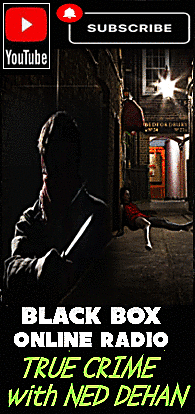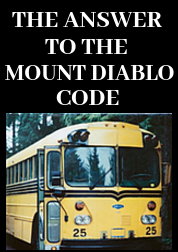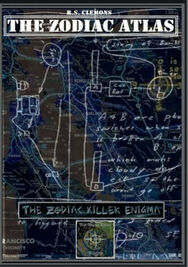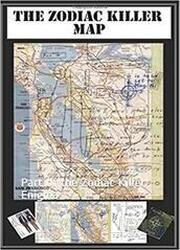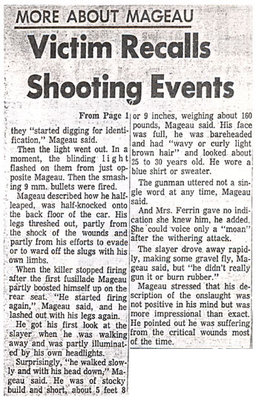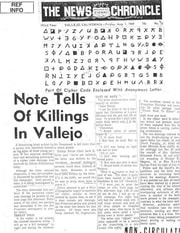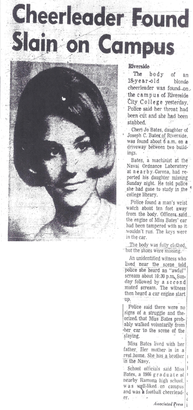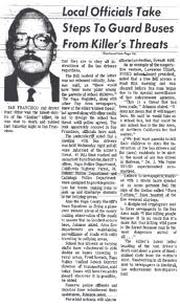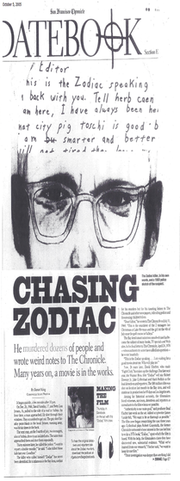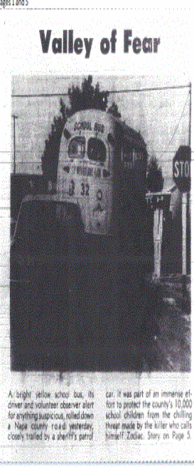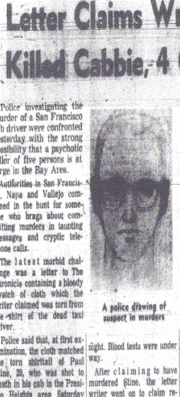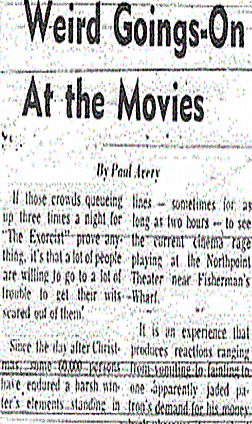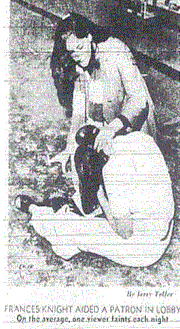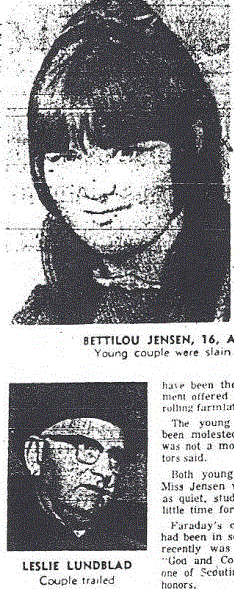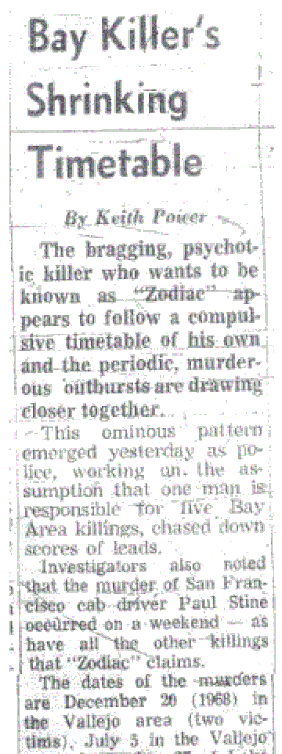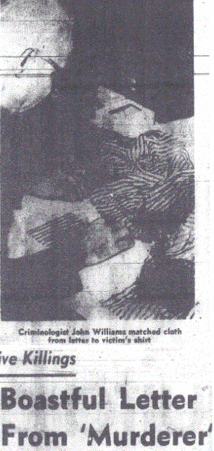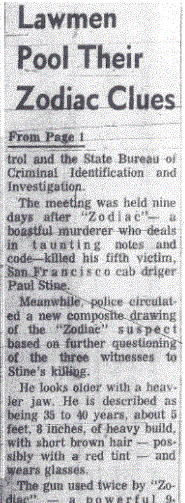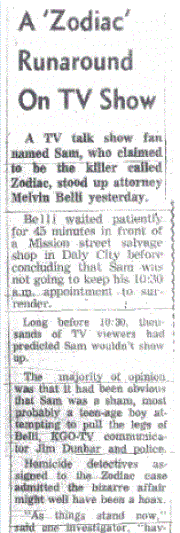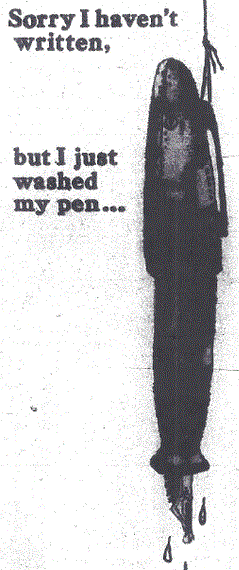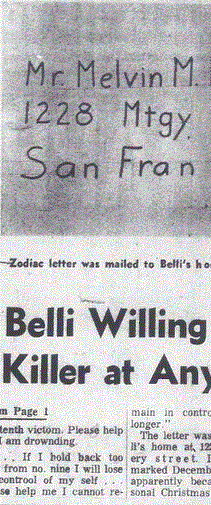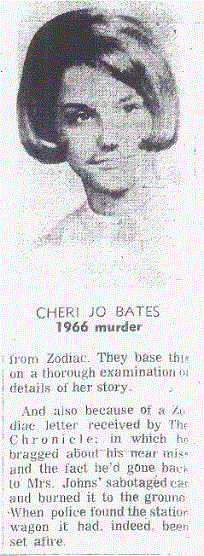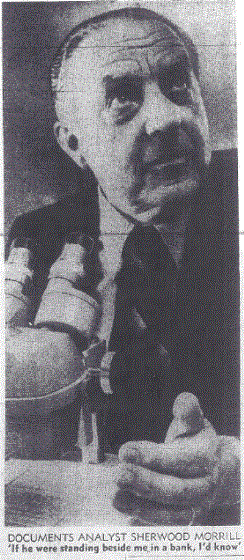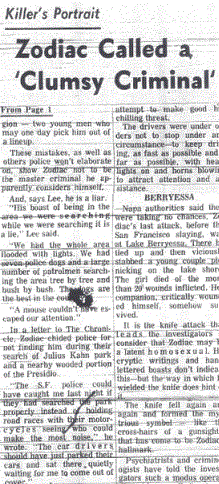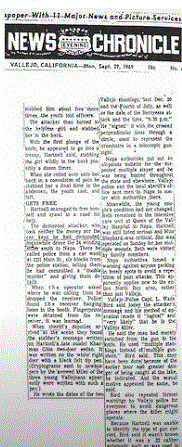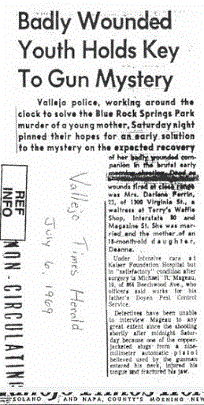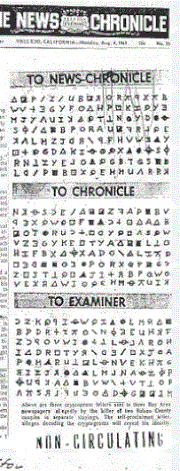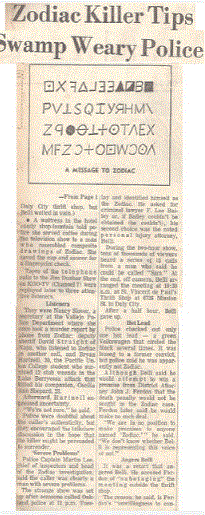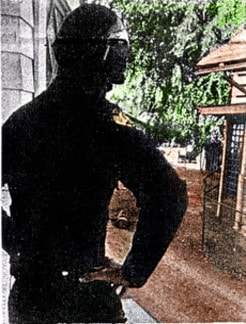
When you consider there was an attempted murder by knife on the Riverside City College campus just a year earlier (April 1965), in which a young girl escaped from an assailant who stabbed her, followed by the newspaper headlines stating Clean-Cut Youth Sought For Stabbing, it's easy to see the correlation in wording to the Riverside Desktop Poem, which opened with the words "cut, clean, if red/clean, blood spurting, dripping, spilling; all over her new dress. Oh well, it was red anyway". The following "She won't die this time, someone'll find her" testimony to the fact she survived the stabbing and sought help nearby. There is every chance the author of the Riverside Desktop Poem was contemporising this attack, before reflecting on the murder of Cheri Jo Bates, implying the next victim wouldn't be so lucky in riverside on halloween (rh). This would date the Riverside Desktop Poem subsequent to October 30th 1966. Rolland Taft was arrested for the attempted murder of the girl in 1965, and was incarcerated at the time Cheri Jo Bates was murdered.
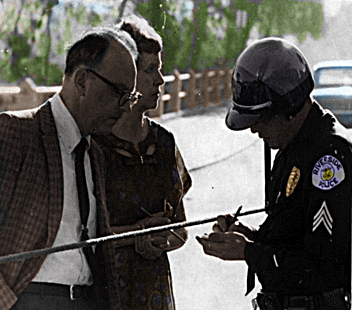
The title of the Riverside Desktop Poem also contained the adverb of "unwilling", the root of which is used twice in the Confession letter, when the author typed "She was then very willing to talk to me" and "She went very willingly". The use of the word "sick" in the Riverside Desktop Poem title was also present in the Confession letter when the author typed "I am not sick". Therefore, we have several words in the title of the Riverside Desktop Poem that featured heavily in the Confession letter. Another feature of the Riverside Desktop Poem was the use of "just wait till next time", implying an impending death. This would mirror the promise of impending death in the Confession letter of ."When we were away from the library walking, I said it was about time. She asked me "about time for what". I said it was about time for her to die". The Riverside Desktop Poem also stated "she won't die, this time someone'll find her". The word "time" used five times in total through two communications.
Bearing in mind the linguistic correlation between the Riverside Desktop Poem, Confession letter and Bates' letters, the latter two of which referenced the murder of Cheri Jo Bates by using her name, it could be argued that the Riverside Desktop Poem was also inferring her murder through "riverside" and "halloween" in the form of rh, along with phraseology of "cut" bleeding into the Confession letter with the wording "I then finished the job out cutting her throat". Two stabbings in consecutive years on the same campus may have been the inspiration behind the Riverside Desktop Poem, with all three sets of communications crafted by the same individual. Knowledge and awareness of the knife attack in April 1965, and the delivery of the Bates' letters on April 30th 1967 spanned two years. So it's perfectly plausible, bearing in mind the writing on the desktop was discovered inside the Riverside City College, that the author of these three sets of communications was a long standing resident of Riverside County, or its neighboring areas. Although there is no way to prove which came first, it appears that the Riverside Desktop Poem was the precursor to the Confession letter (and therefore written between October 31st 1966 and November 29th 1966). The Confession letter the offshoot of the "just wait till next time" threat.
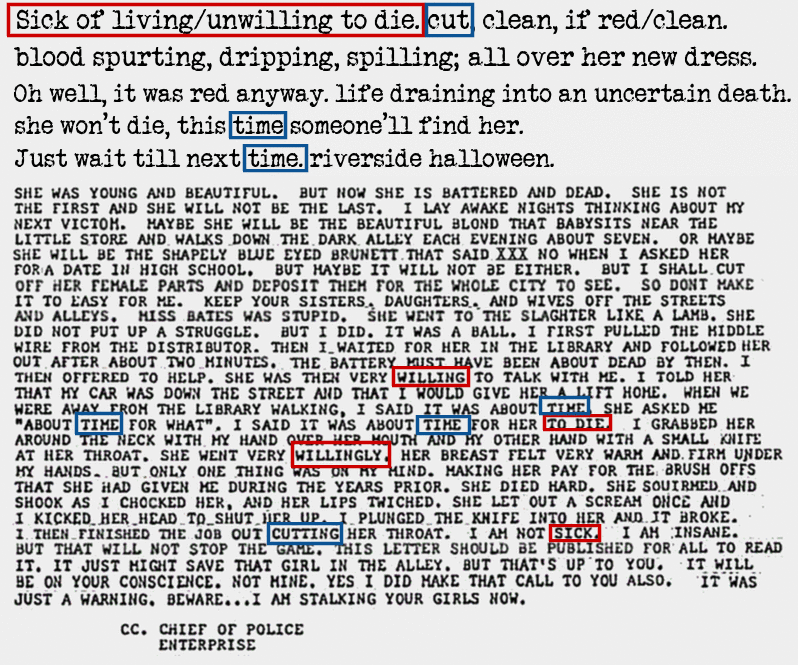
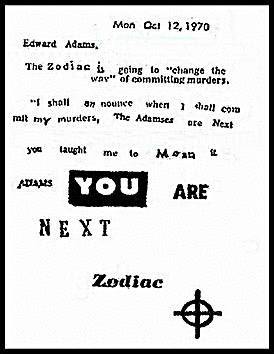
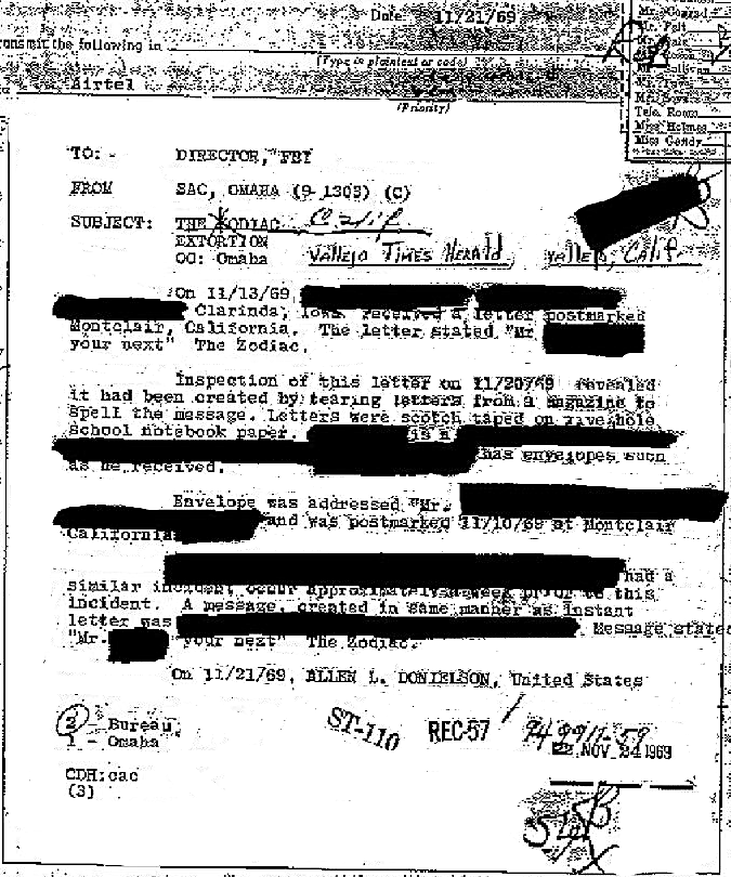

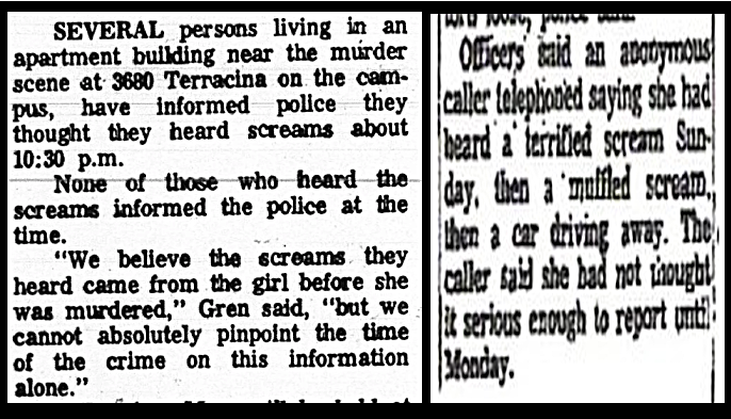

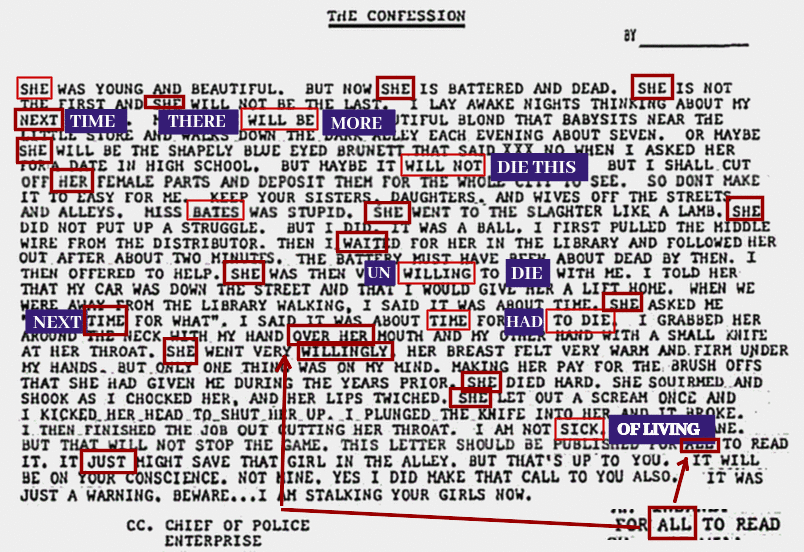
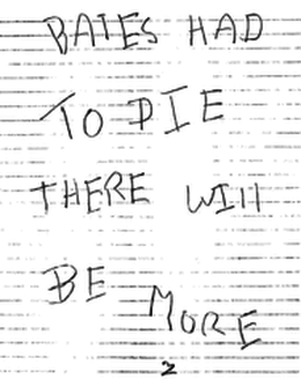

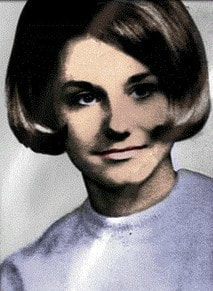
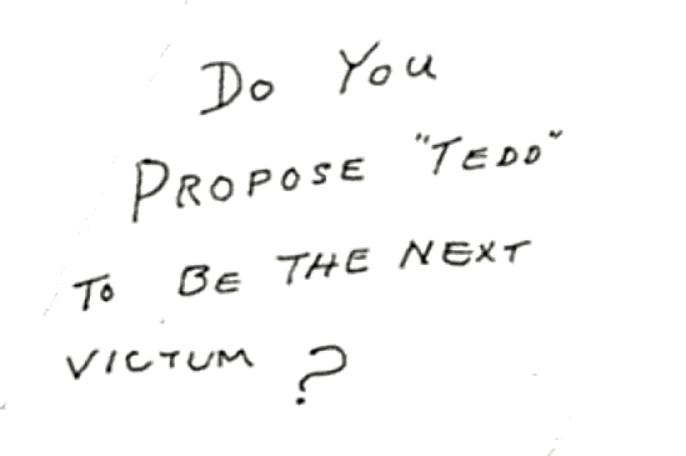
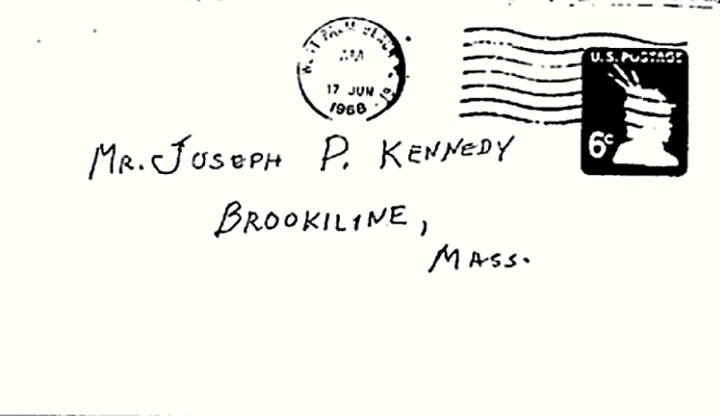
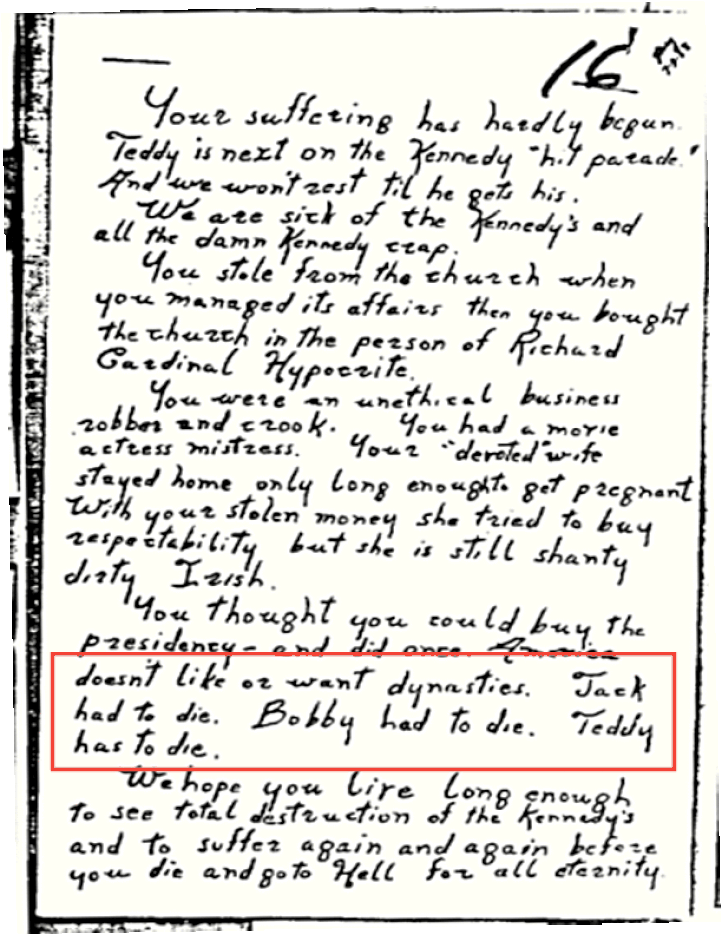
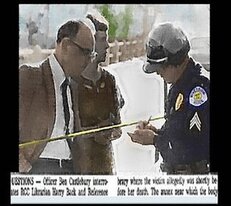
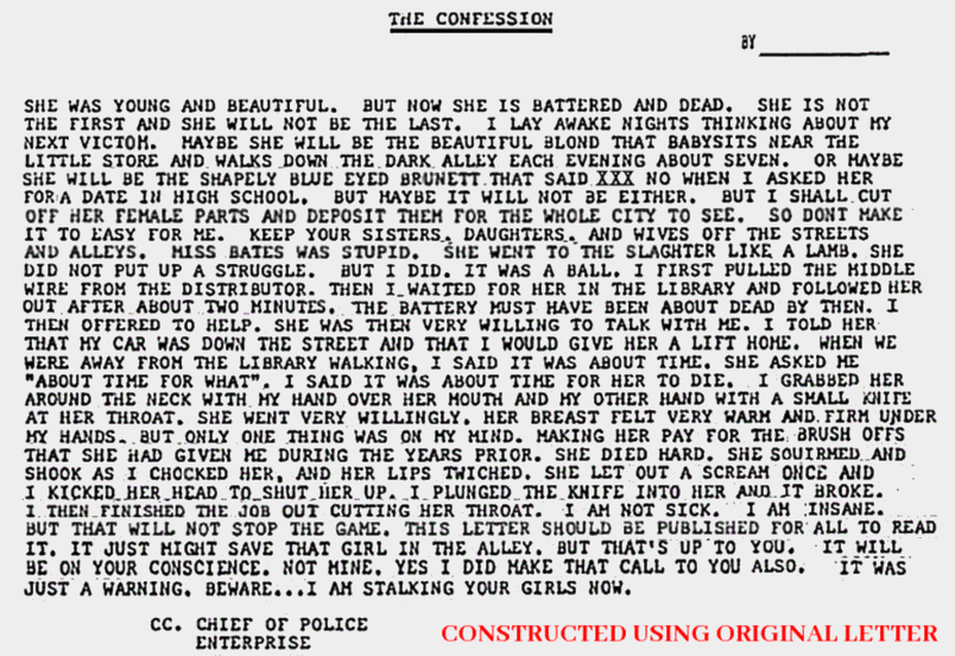

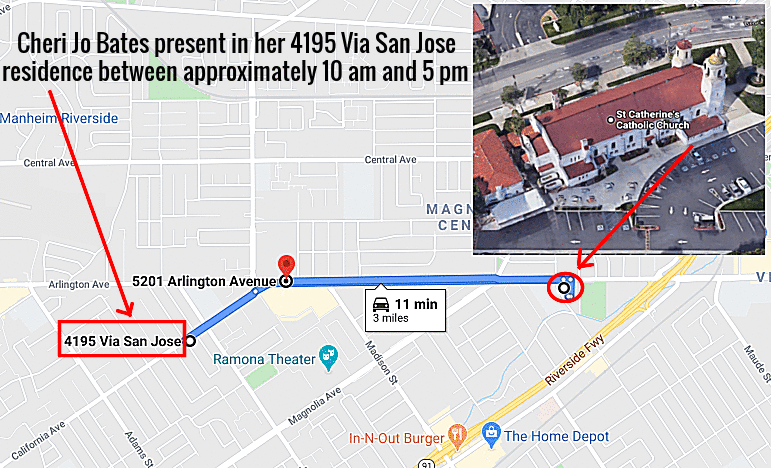

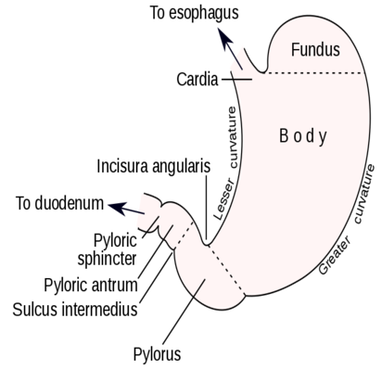
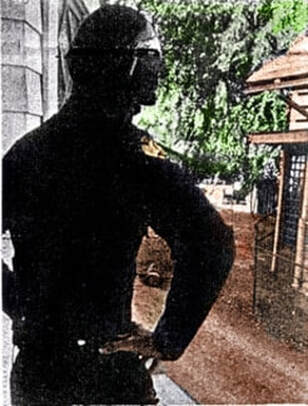
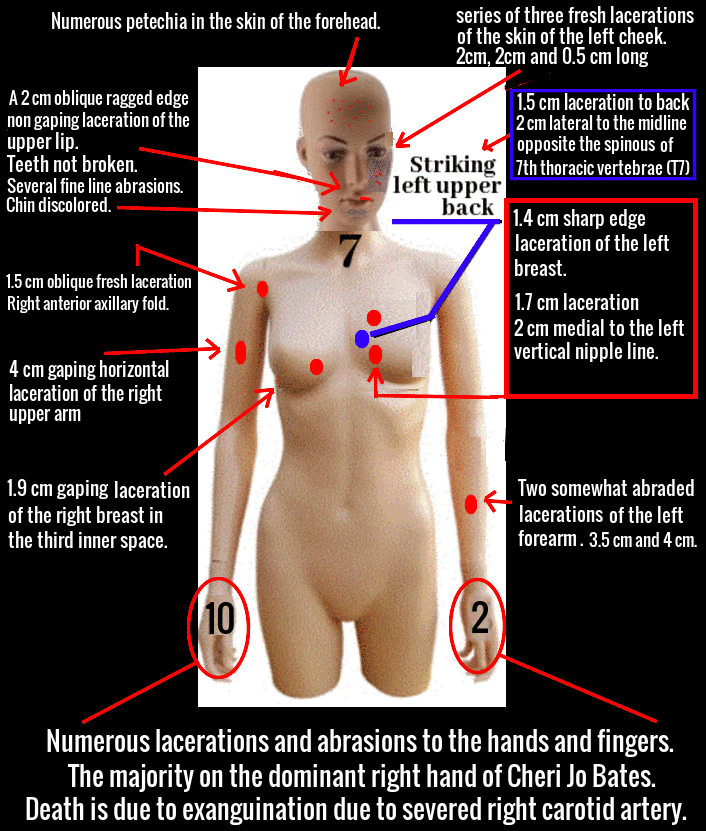
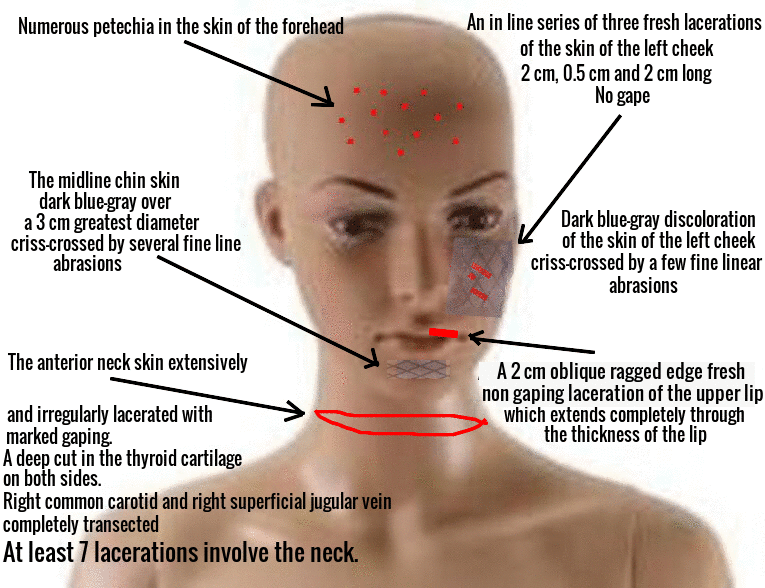
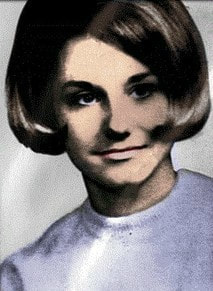

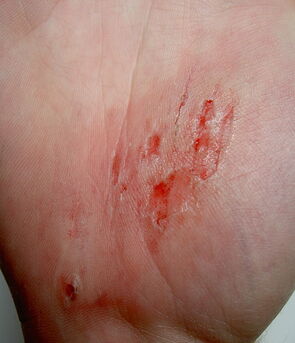
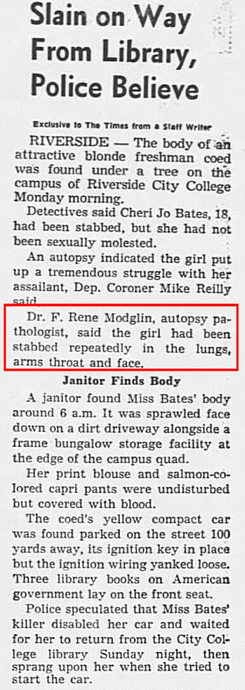
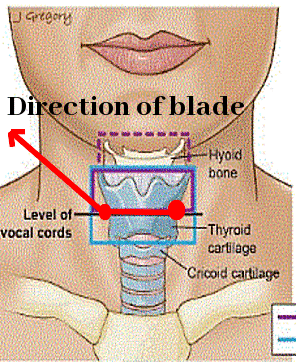
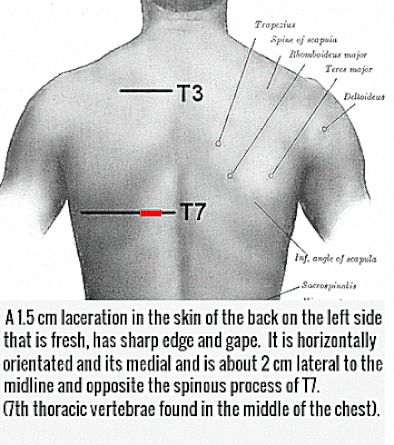
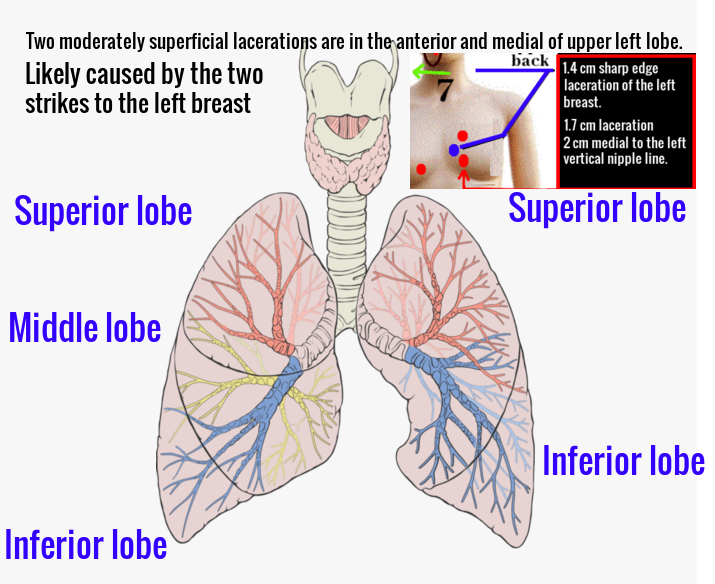
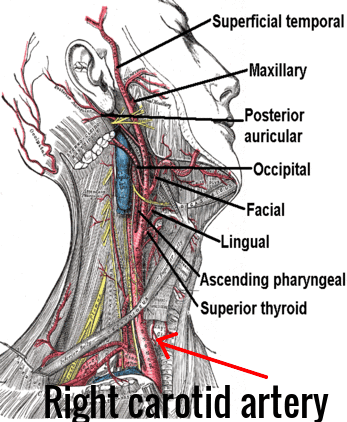
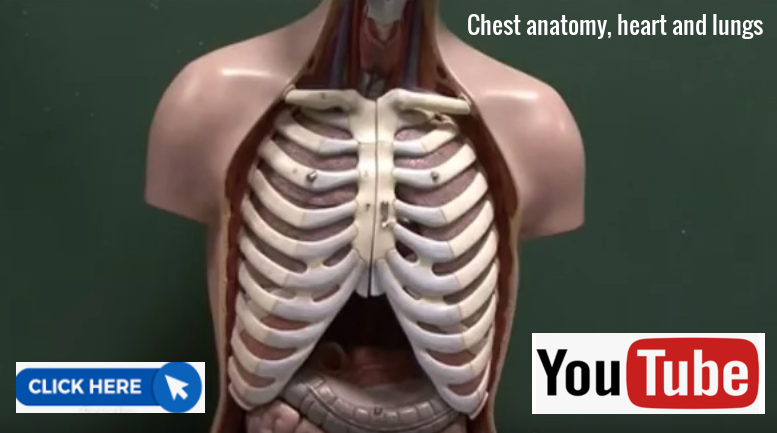
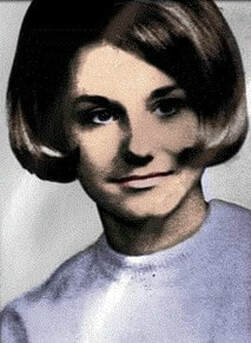
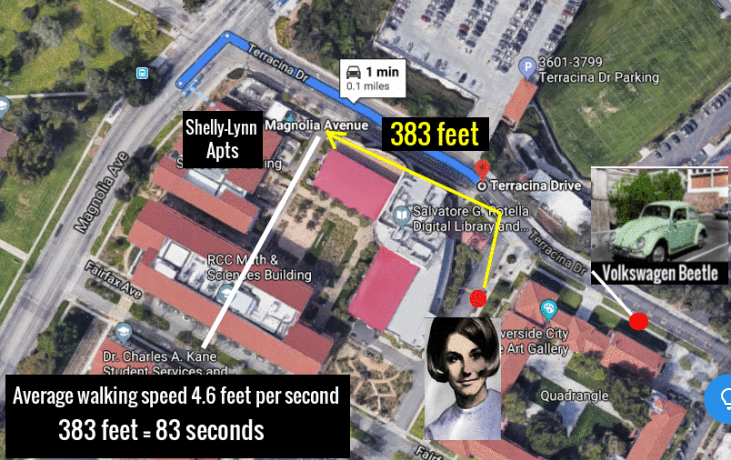
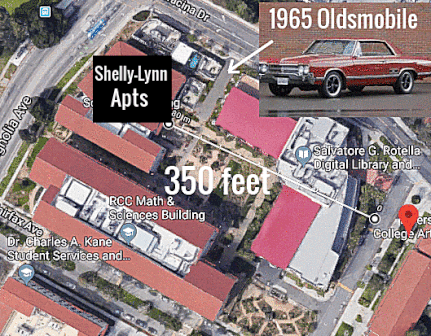
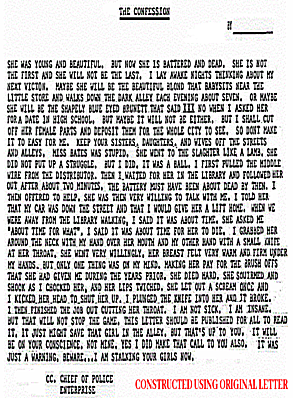
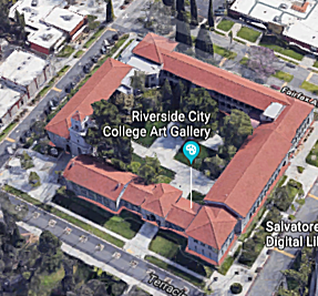
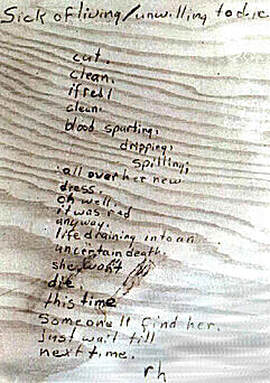





 RSS Feed
RSS Feed
